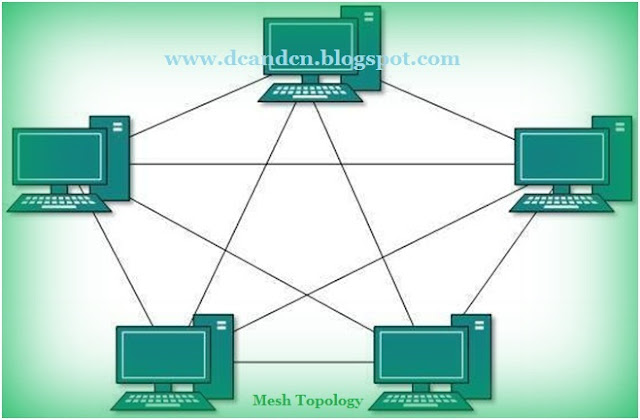What is network topology?
- The arrangement in which computer systems or network devices are connected is referred to as a network topology.
- Both the physical and conceptual aspects of a network can be defined by topologies. In the same network, the logical and physical topologies could be the same or distinct.
Point-to-Point
- Point-to-point networks have exactly two hosts, such as computers, switches, or routers, and servers, which are connected back to back via a single cable.
- Frequently, one host's receiving end is connected to the other's sending end, and vice versa.
- If the hosts are logically connected point-to-point, there may be several intermediary devices. The end hosts, on the other hand, are oblivious of the underlying network and perceive each other as if they are directly linked.
Bus Topology
-
In case of Bus topology, all devices share single communication line or cable.Bus topology may have problem while multiple hosts sending data at the same time.
- Therefore, Bus topology either uses CSMA/CD technology or recognizes one host as Bus Master to solve the issue.
- It is one of the simple forms of networking where a failure of a device does not affect the other devices. But failure of the shared communication line can make all other devices stop functioning.
Disadvantage:- Both ends of the shared channel have line terminator. The data is sent in only one direction and as soon as it reaches the extreme end, the terminator removes the data from the line.
Star Topology
-
All hosts in Star topology are connected to a central device, known as hub device, using a point-to-point connection.
- That is, there exists a point to point connection between hosts and hub. The hub device can be any of the following:
- Layer-1 device such as hub or repeater
- Layer-2 device such as switch or bridge
- Layer-3 device such as router or gateway
-
The hub operates as a single point of failure, similar to the Bus topology. If the hub fails, all hosts lose connectivity with each other.
- Only the hub is used for communication between hosts. The cost of a star topology is low since just one cable is necessary to join another host, and configuration is straightforward.
Ring Topology
-
Each host machine in a ring topology links to precisely two other machines, forming a circular network structure.
- When a host wants to interact with or send a message to a host that isn't directly next to it, the data is routed via all intermediary hosts.
- The administrator may simply require one additional cable to join one more host in the current arrangement.
Disadvantage:- If one of the hosts fails, the entire ring will fail. As a result, every ring link is a point of failure. There are some techniques that use a second backup ring.
Mesh Topology
- A host is connected to one or more hosts in this form of architecture. This topology contains hosts that are in point-to-point connection with each other, or hosts that are only in point-to-point connection with a few hosts.
- Mesh hosts can also act as a relay for other hosts that don't have direct point-to-point connections. Mesh technology is divided into two categories:
- Full Mesh: Every host in the network has a point-to-point link to every other host. As a result, n(n-1)/2 connections are required for each additional host. Among all network topologies, it delivers the most reliable network structure.
- Partially Mesh: Not all hosts are connected to each other in a point-to-point fashion. Hosts communicate with one another in an arbitrary manner. This architecture is used when we need to give dependability to a subset of the hosts.
Tree Topology
- This is the most popular type of network structure in use today, often known as Hierarchical Topology. This topology is modeled after an extended Star topology and inherits bus topology attributes.
- The network is divided into numerous levels/layers using this topology. A network is divided into three categories of network devices, mostly in LANs. The lowest layer is the access layer, which is where computers are connected.
- The distribution layer is the middle layer that acts as a link between the upper and lower layers. The uppermost layer, known as the core layer, is the network's center point, or the root of the tree from which all nodes branch.
-
A point-to-point link exists between all surrounding hosts. In a similar way to the Bus topology, if the root fails, the entire network suffers. It is not, however, the only site of failure.
- Every connection acts as a single point of failure, dividing the network into inaccessible segments if it fails.
Daisy Chain
-
This architecture creates a linear connection between all of the hosts. Except for the end hosts, all hosts are connected to just two hosts, similar to Ring topology.
- If the end hosts of a daisy chain are connected, the topology is referred to as Ring topology.
Disadvantage: A single point of failure is represented by each link in a daisy chain topology. Every broken link divides the network into two halves. Every intermediate host acts as a relay for the hosts in its immediate vicinity.
Hybrid Topology
-
Hybrid topology refers to a network structure with many topologies in its design.
- The advantages and disadvantages of each incorporating topology are passed down to the hybrid topology.
-
The image above depicts a topology that has been randomly hybridized. Aspects of Star, Ring, Bus, and Daisy-chain topologies may be present in the merging topologies.
- The majority of WANs are connected using a Dual-Ring topology, and the networks that connect to them are typically Star topologies.
- The Internet is the most well-known example of a hybrid topology.
















thanks for sharing very useful information
ReplyDelete